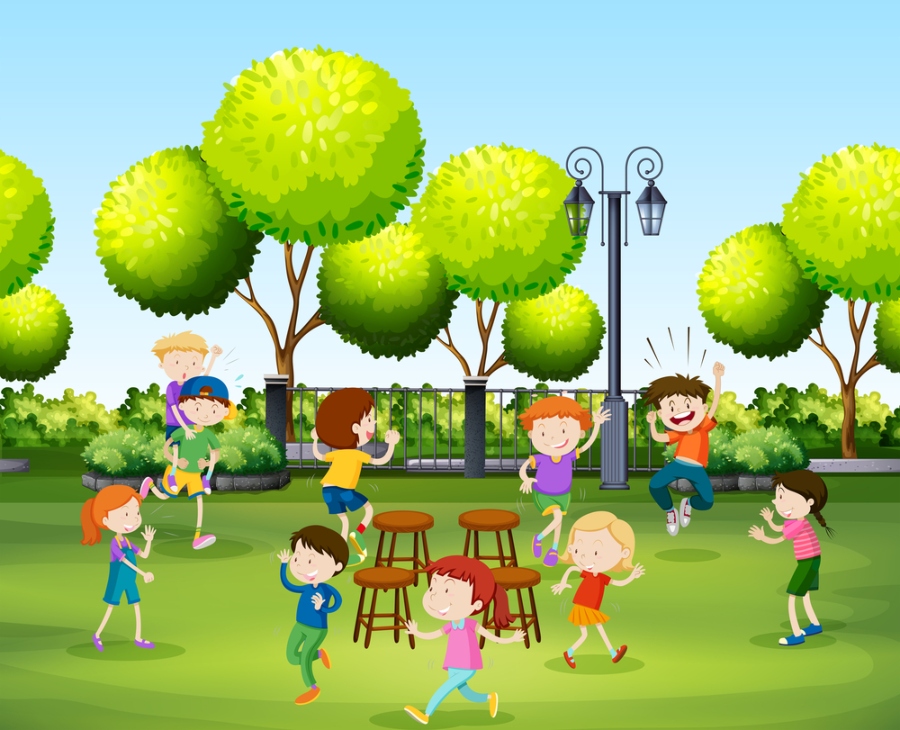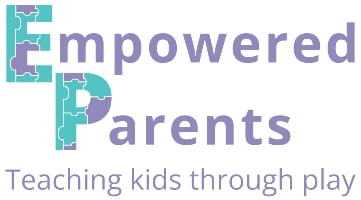Musical Chairs is an interactive and enjoyable game often played at birthday parties. It’s also ideal for settings with groups of children, such as a class or a playdate with friends.
Find out how to play this awesome group game, why it’s actually educational, and discover some fun variations of musical chairs for kids.
How Many Players Do You Need for Musical Chairs?
For the game to be enjoyable, it’s best to play with at least 5 to 10 children.
If playing with toddlers or young preschoolers, it’s fine to play with just a few children to teach them how to dance, listen for the music to stop, and quickly find a chair.
For toddlers, avoid removing a chair each round, as they may not yet understand the concept of rules in games.
Musical Chairs Rules
All you need to play Musical Chairs are children, chairs, and music!
- The chairs are placed in a circle, usually facing outwards.
- Provide one chair for each child.
- The adult plays music while the children dance freely, and one chair is removed from the circle.
- When the music stops, the children have to sit on a chair as quickly as possible.
- Any child who cannot find a chair is out and must wait on the sidelines.
- Continue the game until the last child sits on the last chair.
- Then, start a new round.

Musical Chairs with a Twist
How can you make Musical Chairs more fun? Try these variations of Musical Chairs to suit different ages and explore new ways to play.
- Involve the children who are out – Let the child who is out remove a chair in the next round so they can stay involved in the game.
- Change the rules for toddlers – Keep all chairs in place so toddlers can participate in every round.
- Face inwards – Arrange the chairs facing inwards so the children interact more as they dance inside the circle.
- Place chairs back to back – Instead of making a circle with the chairs, place them back to back in two rows.
- Place chairs randomly – Use a large space for dancing and arrange the chairs randomly around the room to make them harder to find when the music stops.
- Don’t use chairs – Replace the chairs with paper plates, hula hoops, or other objects that kids can sit on. Rename the game “Musical Hoops” or “Musical Plates” instead.
- Following instructions – Use the game to teach listening and gross motor skills by choosing an action to perform to the music for each round instead of dancing. They could march, do jumping jacks, or hop around the room. Children must follow the instructions and pay attention to when the music stops to find a seat.

Musical Chair Game Benefits
What do children learn from the Musical Chairs game?
There are so many benefits of music in general. Here are just a few of the benefits of playing this game:
Gross Motor Skills
As a movement game, Musical Chairs helps develop children’s gross motor skills.
Speed, Balance and Coordination
Kids need to react quickly and move with speed or they will not make it to a chair on time. They need balance and coordination to execute these movements.
Spatial Skills
Learning to share space and navigate around others without bumping into them is a key aspect of sensory development.
By playing this game, children are able to develop their understanding of their position in space as they dance, plan their route and then run to a chair.
Planning
Reaching a chair safely requires advance planning. While dancing, kids must plan where they want to attempt to sit, as well as develop some backup plans in case the seat is taken.
For instance, if a seat is taken, it makes more sense to find the next closest seat than to run to the other side of the room.
Concentration and Listening Skills
Children must listen carefully and stay alert to react as soon as the music stops. It teaches quick thinking.
Social Skills
Musical Chairs is great for building social skills. Kids learn to move together, share space, avoid hurting anyone when attempting to get to a chair, and be patient. They also get to practise losing gracefully.

Musical Chairs Music
The best songs for musical chairs are upbeat and have a nice rhythm that kids can dance to.
Favourite Nursery Rhymes
Young children will enjoy dancing to familiar nursery rhymes they love.
Here is a comprehensive preschool songs list.
Popular Songs
To maximise fun, play popular songs that kids and adults both enjoy. Here are some popular choices that are always a hit.
- OneRepublic – Counting Stars
- Katy Perry – Firework
- Billy Joel – Uptown Girl
- Pharrell Williams – Happy
- Avicii – Wake Me Up

Musical Chairs Compilations
YouTube has many videos with music suitable for a game of Musical Chairs. These include built-in stops, so you don’t have to manually pause the music.
Games Similar to Musical Chairs
These two games are similar to Musical Chairs because they both involve movement and require listening to the music and acting when it stops.
- Musical Statues – Also called Freeze Dance, in Musical Statues children must dance to the music and then freeze when the music stops.
- Pass the Parcel – In this carpet game, children pass a wrapped parcel around the circle while the music is playing and when the music stops, the child who is holding the parcel must remove one layer of wrapping.
While the following games are not played to music, they are also great for developing listening skills:
- The Telephone Game
- Simon Says
- Do This, Do That
- The Odd One Out Game
- The Categories Game
- I Spy with My Little Eye
Here’s a list of traditional games for kids.

